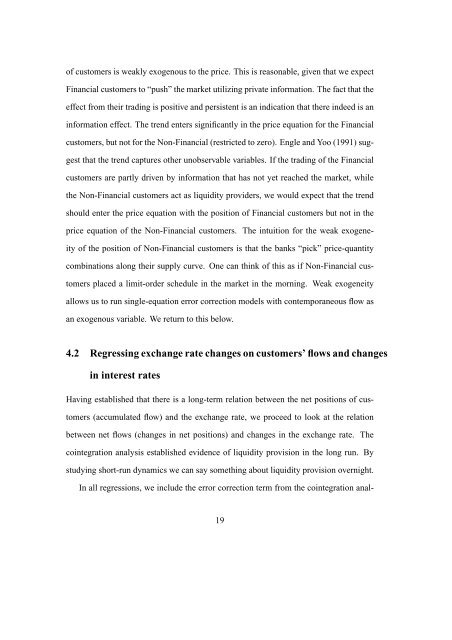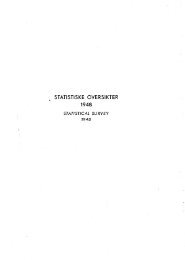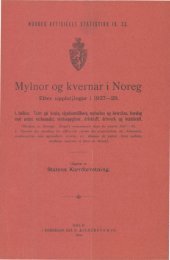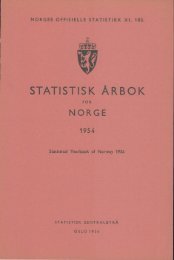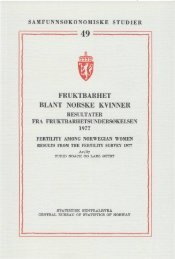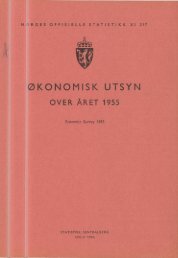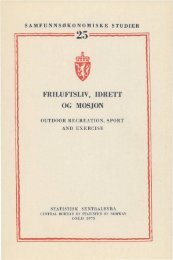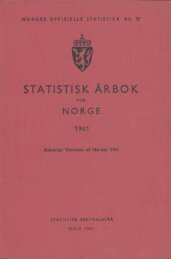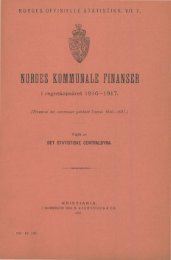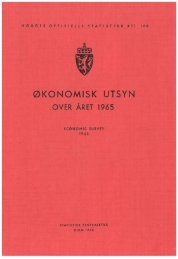Liquidity provision in the overnight foreign exchange market
Liquidity provision in the overnight foreign exchange market
Liquidity provision in the overnight foreign exchange market
Create successful ePaper yourself
Turn your PDF publications into a flip-book with our unique Google optimized e-Paper software.
of customers is weakly exogenous to <strong>the</strong> price. This is reasonable, given that we expect<br />
F<strong>in</strong>ancial customers to “push” <strong>the</strong> <strong>market</strong> utiliz<strong>in</strong>g private <strong>in</strong>formation. The fact that <strong>the</strong><br />
effect from <strong>the</strong>ir trad<strong>in</strong>g is positive and persistent is an <strong>in</strong>dication that <strong>the</strong>re <strong>in</strong>deed is an<br />
<strong>in</strong>formation effect. The trend enters significantly <strong>in</strong> <strong>the</strong> price equation for <strong>the</strong> F<strong>in</strong>ancial<br />
customers, but not for <strong>the</strong> Non-F<strong>in</strong>ancial (restricted to zero). Engle and Yoo (1991) suggest<br />
that <strong>the</strong> trend captures o<strong>the</strong>r unobservable variables. If <strong>the</strong> trad<strong>in</strong>g of <strong>the</strong> F<strong>in</strong>ancial<br />
customers are partly driven by <strong>in</strong>formation that has not yet reached <strong>the</strong> <strong>market</strong>, while<br />
<strong>the</strong> Non-F<strong>in</strong>ancial customers act as liquidity providers, we would expect that <strong>the</strong> trend<br />
should enter <strong>the</strong> price equation with <strong>the</strong> position of F<strong>in</strong>ancial customers but not <strong>in</strong> <strong>the</strong><br />
price equation of <strong>the</strong> Non-F<strong>in</strong>ancial customers. The <strong>in</strong>tuition for <strong>the</strong> weak exogeneity<br />
of <strong>the</strong> position of Non-F<strong>in</strong>ancial customers is that <strong>the</strong> banks “pick” price-quantity<br />
comb<strong>in</strong>ations along <strong>the</strong>ir supply curve. One can th<strong>in</strong>k of this as if Non-F<strong>in</strong>ancial customers<br />
placed a limit-order schedule <strong>in</strong> <strong>the</strong> <strong>market</strong> <strong>in</strong> <strong>the</strong> morn<strong>in</strong>g. Weak exogeneity<br />
allows us to run s<strong>in</strong>gle-equation error correction models with contemporaneous flow as<br />
an exogenous variable. We return to this below.<br />
4.2 Regress<strong>in</strong>g <strong>exchange</strong> rate changes on customers’ flows and changes<br />
<strong>in</strong> <strong>in</strong>terest rates<br />
Hav<strong>in</strong>g established that <strong>the</strong>re is a long-term relation between <strong>the</strong> net positions of customers<br />
(accumulated flow) and <strong>the</strong> <strong>exchange</strong> rate, we proceed to look at <strong>the</strong> relation<br />
between net flows (changes <strong>in</strong> net positions) and changes <strong>in</strong> <strong>the</strong> <strong>exchange</strong> rate. The<br />
co<strong>in</strong>tegration analysis established evidence of liquidity <strong>provision</strong> <strong>in</strong> <strong>the</strong> long run. By<br />
study<strong>in</strong>g short-run dynamics we can say someth<strong>in</strong>g about liquidity <strong>provision</strong> <strong>overnight</strong>.<br />
In all regressions, we <strong>in</strong>clude <strong>the</strong> error correction term from <strong>the</strong> co<strong>in</strong>tegration anal-<br />
19


